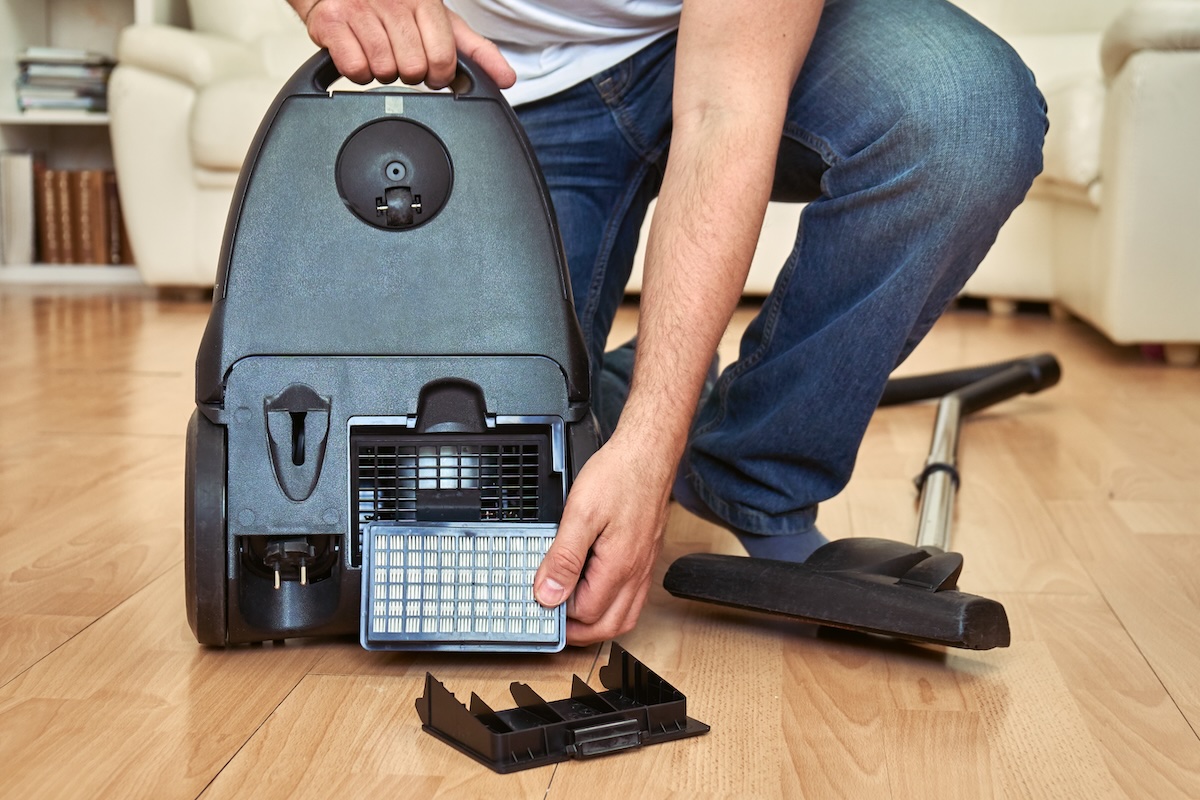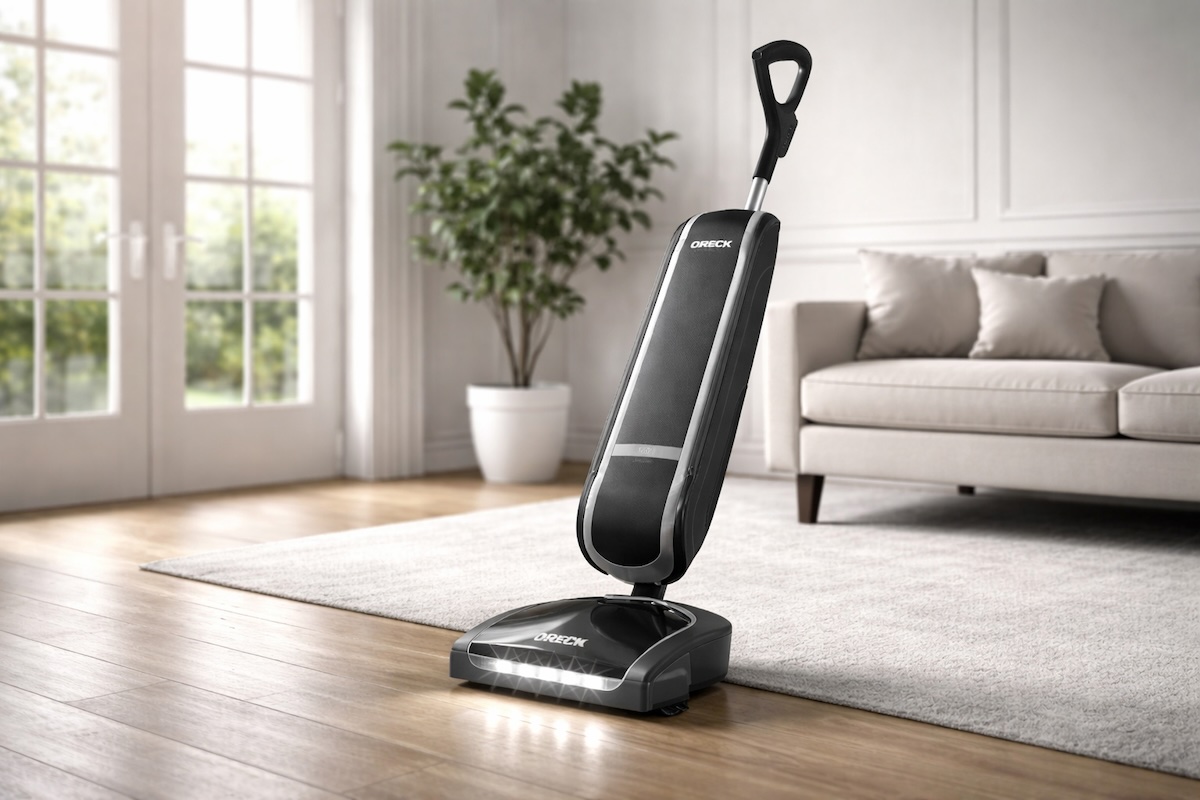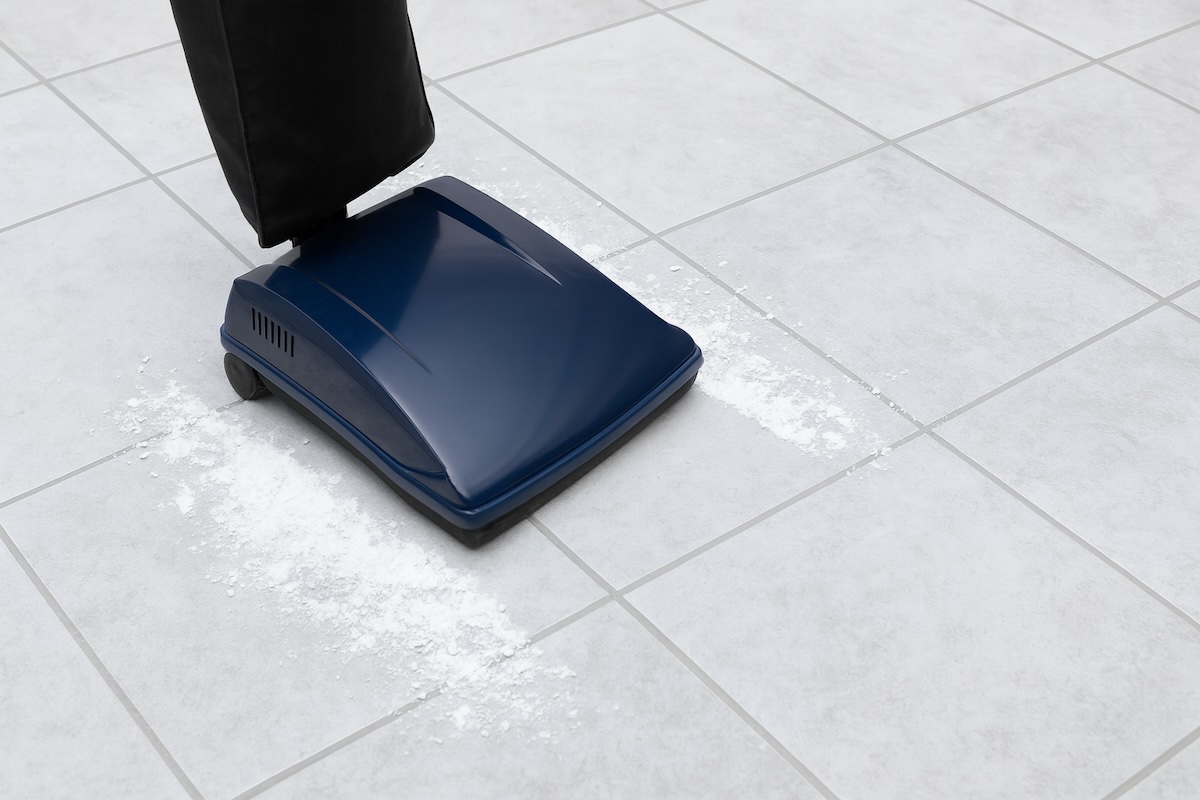Most people don’t give a second thought to their vacuum filter—at least not until their machine starts losing suction or kicking up a dusty smell. But that little piece of material sitting inside your vacuum does a whole lot of heavy lifting. It’s the difference between a home that’s truly clean and one that just looks it.
Finding the correct replacement filter isn’t always as easy as it sounds, though. Between the wide variety of vacuum styles, the alphabet soup of filter types (HEPA, charcoal, foam, paper), and the often-confusing way manufacturers label vacuum cleaner replacement parts, it can feel like a scavenger hunt every time you need a new one. And if you’ve ever owned a product from a premium vacuum brand like Riccar, Sebo, Miele, Simplicity, or even CycloVac, you know that the search gets much trickier—these aren’t filters you can just toss into your shopping cart the next time you’re at Walmart.
The same thing goes for finding compatible replacement vacuum bags. Folks often think of bags as nothing more than a dust collector, but in many machines—especially higher-end uprights and canisters—the bag itself doubles as a filtration layer. That’s why using the wrong style, or letting one overfill, can have the same effect as a clogged filter: weak suction, dust leaking around the seams, or a motor that’s working way harder than it should. (Riccar and Simplicity are great examples here—those HEPA cloth bags are engineered to trap allergens in a way paper generics simply can’t. If you’ve ever swapped one out and noticed the air actually smells fresher after vacuuming, that’s no accident.)
All that confusion is why this guide exists. We’re going to take a look at everything you need to know about vacuum filter replacements—how to identify the right one, why getting the right one matters in the first place, and where to find the hard-to-get filters that keep high-end vacuum cleaners running like new.
Table of Contents
ToggleWhat Vacuum Filters Actually Do
A vacuum cleaner’s filter is more than a dust screen. Depending on the model, your filter may trap:
- Large debris and hair before it clogs the motor or bag.
- Fine dust that would otherwise recirculate back into the air.
- Allergens and microscopic particles—in the case of HEPA filters, we’re talking down to 0.3 microns.
- Odors from pets, cooking, or general use, if the machine uses activated carbon.
If you’ve got allergies in the family or you rely on your vacuum to keep pet hair under control, the quality and condition of that filter make all the difference. Running a vacuum with the wrong filter—or one that’s clogged—doesn’t just mean weaker suction. It can mean dust that never really leaves the room, a struggling motor, or in the worst case, a machine that burns out years before it should.
The Trick to Finding the Correct Replacements
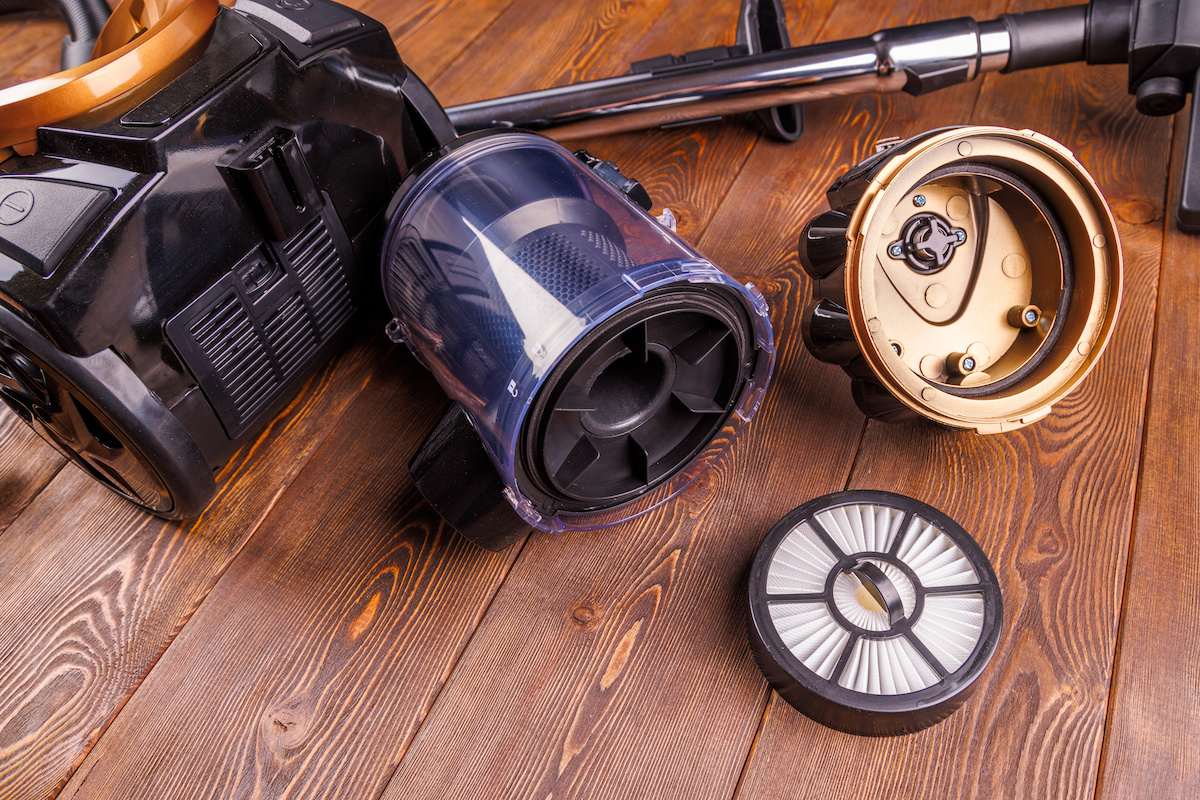
Every vacuum manufacturer has its own system for labeling filters, and it’s rarely straightforward. Some use part numbers, some use filter “types” (Type A, Type B, etc.), and others change the packaging every few years, which leads to confusion when you’re trying to find the right part. (Add to that the flood of generic, low-quality replacement parts available online, and it’s no wonder it can seem like such a hassle just to change your vacuum cleaner bag or filter these days!)
Here are the most common ways you’ll see filters described:
- By Part Number – The most reliable method, usually printed on the vacuum itself, the filter frame, or the owner’s manual.
- By Series or Model – Brands like Riccar and Simplicity often sell filters matched to a particular machine line.
- By Type Letter/Name – More common with mainstream brands like Hoover and Eureka.
- By Function – HEPA, foam, motor protection, carbon, exhaust, or pre-filter.
Knowing which “language” your brand uses is step one. For example, CycloVac (a central vacuum maker) often lists filters by model compatibility, while Simplicity might split them into HEPA vs. charcoal filter packs, depending on the exact machine you own.
Premium Brands: Why They’re Harder to Match
If you own a higher-end vacuum like a Sebo upright or a CycloVac central system, you’ve probably noticed that finding filters isn’t as simple as grabbing a universal option. These companies build their machines to a tighter standard than big-box vacuums. That means the filter housing is often custom-sized, and the media inside is engineered for performance that generic replacements just can’t match.
For instance:
- Riccar and Simplicity – Both emphasize HEPA-level filtration and sealed systems. Using an off-brand filter here isn’t just risky; it can actually break the seal and let dust bypass the filter entirely.
- Miele and Sebo – They’re known for precision-fit parts, where a wrong filter can feel like forcing the wrong key into a lock.
- CycloVac – Their large-capacity central systems often require oversized HEPA or cartridge filters not sold in most retail stores. If you install a filter that’s even slightly off-size, airflow efficiency tanks.
This isn’t to say you always need the “genuine OEM” replacement from the manufacturer—but with these brands, you do need to be very cautious. Knockoff filters might fit, but they won’t necessarily maintain the vacuum’s airflow or filtration rating.
How to Find the Correct Replacement Filter for Your Vacuum
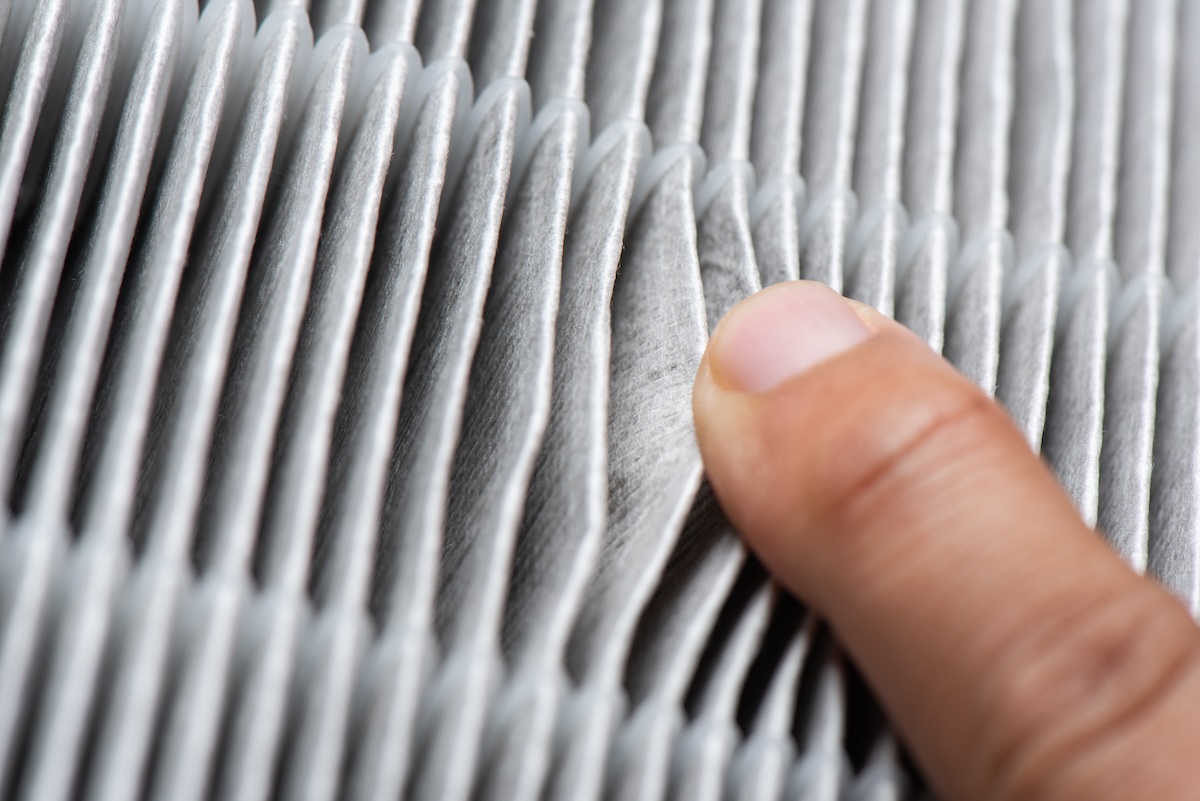
Step 1: Identify Your Vacuum Model
The number one mistake folks make when shopping for filters is guessing their vacuum’s model. Manufacturers love to slap “series” names on the front of a machine, but that doesn’t always tell you what filter it takes.
Here’s where to check instead:
- Underneath the machine or behind the dustbin — Most vacuums have a sticker or plate with the full model number.
- Inside the filter compartment — Sometimes the part number for the filter itself is printed right on the plastic frame.
- Owner’s manual — If you still have it, this is often the clearest way to confirm.
- Manufacturer’s website — Many premium brands like Riccar, Simplicity, and CycloVac keep updated compatibility charts online.
Pro tip: write down or snap a picture of that model number. If you rely on “I think it’s the blue one with the pet attachment,” you’ll end up ordering the wrong thing nine times out of ten.
Step 2: Match the Filter Type, Not Just the Size
Once you know your model, the next step is making sure you’re replacing like-for-like. This is where a lot of folks accidentally downgrade their machine without realizing it.
The main filter categories include:
- Pre-motor filters — Usually foam or felt, designed to catch dust before it hits the motor.
- HEPA filters — High-efficiency filters that trap the tiniest allergens and particles.
- Charcoal/Carbon filters — Used to control odors, especially in pet households.
- Exhaust filters — Keep fine dust from blowing back into the air after suction.
Take a Riccar upright as an example: many of these models use two or three different filters at once. If you replace the HEPA but forget the charcoal insert, the vacuum will still run — but your pet odors won’t be controlled.
Step 3: Cross-Reference Before You Buy
Even when you think you’ve got the right part number, it pays to double-check. Brands sometimes update their designs without much notice. You don’t want to order a filter that technically “fits” but blocks airflow or won’t seat properly.
Ways to cross-reference include:
- Retailer compatibility tools — Sites like VacuumStore, eVacuumStore, or the manufacturer’s own parts finder let you punch in your model and confirm.
- User forums — Believe it or not, premium vacuum owners often share filter swaps and compatibility info. CycloVac central vac owners especially rely on these.
- Calling a local dealer — There’s a good chance a local sewing & vacuum shop carries Riccar or Simplicity parts and can confirm the right filter on the spot. Many premium brands, especially Riccar and Simplicity, are sold through small specialty shops rather than big-box stores.
These are often the same local businesses that carry sewing machines and service equipment, so don’t be surprised if the sign says “Sewing & Vacuum” out front!
Step 4: Decide on OEM vs. Generic
This is the big fork in the road.
- OEM filters (Original Equipment Manufacturer) are guaranteed to fit and perform as designed. You’ll pay more, but you’re buying certainty.
- Generic filters can save you money, but they’re hit or miss. Some are made to a high standard; others use flimsy material that clogs fast or leaks fine dust.
For everyday brands like Hoover or Shark, generics can be OK if they have good reviews. The design tolerances on those machines are wider, and some are even built with the expectation that parts will be replaced with what’s available at the big-box store.
For premium brands like Miele, Sebo, Riccar, Simplicity, CycloVac, and so on I recommend sticking with OEM vacuum parts or dealer-approved alternatives for replacement filters. These manufacturers engineer their vacuums as sealed systems, where airflow, suction, and filtration all depend on tight tolerances. A filter that’s even slightly off in density, thickness, or gasket fit doesn’t just risk letting fine dust back into your home—it can change the pressure inside the machine, strain the motor, and shave years off its usable life. That’s why owners who’ve invested in higher-end vacuums are better off sticking with OEM replacement vacuum filters or dealer-approved equivalents.
Step 5: Keep a Replacement Schedule
Even the best filter isn’t meant to last forever. Manufacturers usually recommend:
- Foam/felt filters — Wash or replace every 3–6 months.
- HEPA filters — Replace every 6–12 months (sometimes longer with premium models).
- Carbon filters — Replace as soon as odors return, often every 3–6 months.
- Central vac cartridge filters — Can last 2–3 years but need regular cleaning.
If you have pets, allergies, or use the vacuum heavily, expect to replace sooner. A clogged filter puts more strain on your vacuum motor than most people realize — it’s like running a marathon while breathing through a straw.
Getting the Right Replacement Parts Pays Off

At the end of the day, a vacuum is only as good as the parts that keep it breathing. Filters (and bags, when your machine uses them) aren’t throwaway accessories—well, technically you do throw them away, but not before they’ve pulled their weight. They’re the pieces that protect your air quality, protect your motor, and protect your investment. And when those parts aren’t kept up with, it’s often the first step down the road toward a trip to the vacuum cleaner repair shop that could have been avoided.
If you’ve got a Hoover, Eureka, Bissell, or Shark, you can usually get by with a well-reviewed generic. But if you’re using a premium machine like a Riccar, Simplicity, CycloVac, Miele, or Sebo, it pays to stick with the real thing. Taking a couple of extra minutes to confirm your model number, match the right filter type, and stick with OEM or dealer-approved replacements when it really counts can save you years of performance and a whole lot of frustration.
Don’t let a ten-dollar mistake cost you a thousand-dollar machine. Get the right filter, replace it on schedule, and your vacuum will keep doing its job the way it was designed—quietly, reliably, and with the kind of deep cleaning power you notice every single time you use it.

